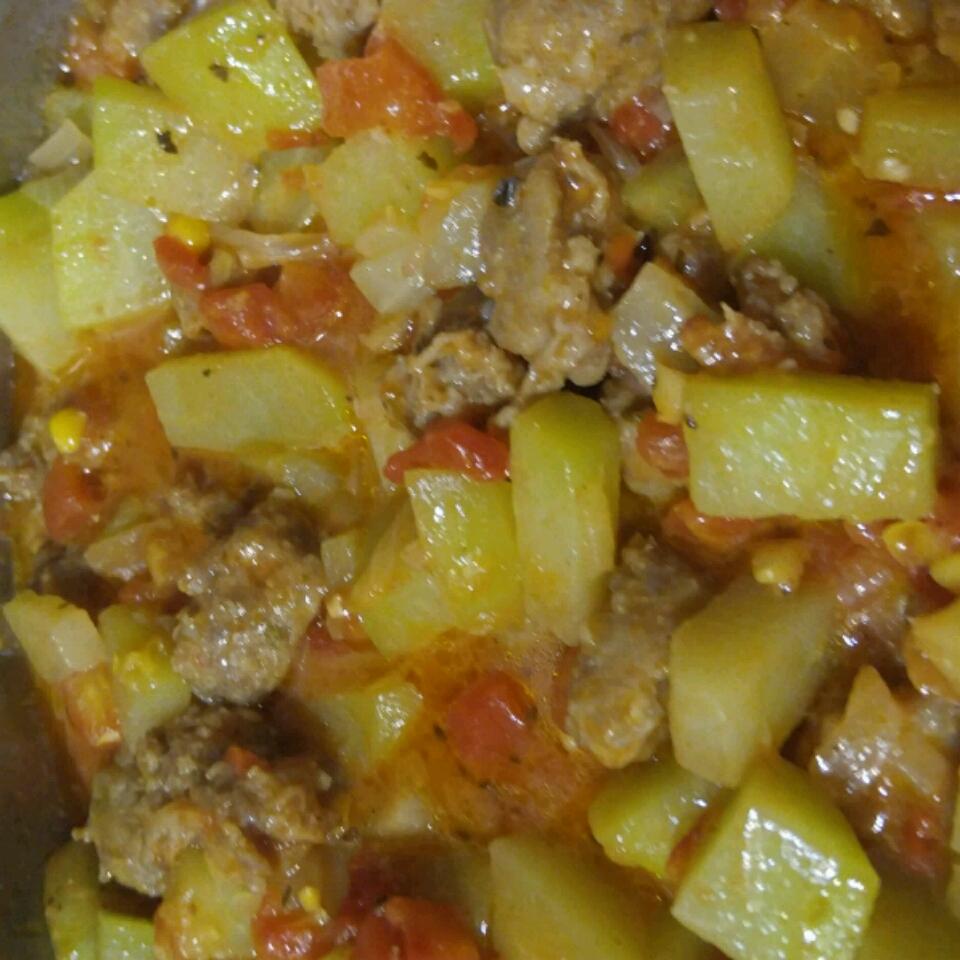Chayote and Sausage Stew

This recipe started as an experiment using chayote. It received unexpected raves at the table and is now in regular rotation at our house. We like this served over rice.
INGRIDIENT
DIRECTION
Step: 1
Place a large saucepan over medium-high heat; cook the sausage in the skillet until browned; remove the sausage to a plate lined with paper towels. Add the olive oil. onion, and garlic to the skillet; cook and stir until the onions are translucent, 3 to 5 minutes. Return the sausage to the pan along with the chayote squash and jalapeno peppers; cook and stir until the squash begins to soften, 10 to 15 minutes. Stir in the tomatoes, black beans, corn, thyme, and chili powder; season with salt and pepper. Cook until completely heated through, about 10 minutes more.
NUTRITION FACT
Per Serving: 139 calories; protein 5.6g; carbohydrates 12.8g; fat 7.6g; cholesterol 11mg; sodium 322.9mg.
The word “stew” can process to both a food and a cooking method. Stewing makes not fast cooking piece of meat, raw fruit or beans in a tastefull water based . It’s same as to braising, instead it makes have a few notable differences. The meat is chopped into smaller pieces but of being cooked whole , and the liquid all of it covers the contents in a stew as different to a braise’s halfway all of it . When meat or raw fruit are cooked using this method, the resulting dish is called stew.
Stew has a perception for being a rib-sticking eating process that comfortable you up on a freezing , winter day. It’s true ; a bowl of classic beef stew can make warming properties , but stew’s comfort factor goes way beyond protecting you from the cold . It’s all about those soft and chunks of meat and vegetables, swimming in a thick, ultra-rich gravy. The way they come together creates the ultimate comfort food, no matter the weather.





